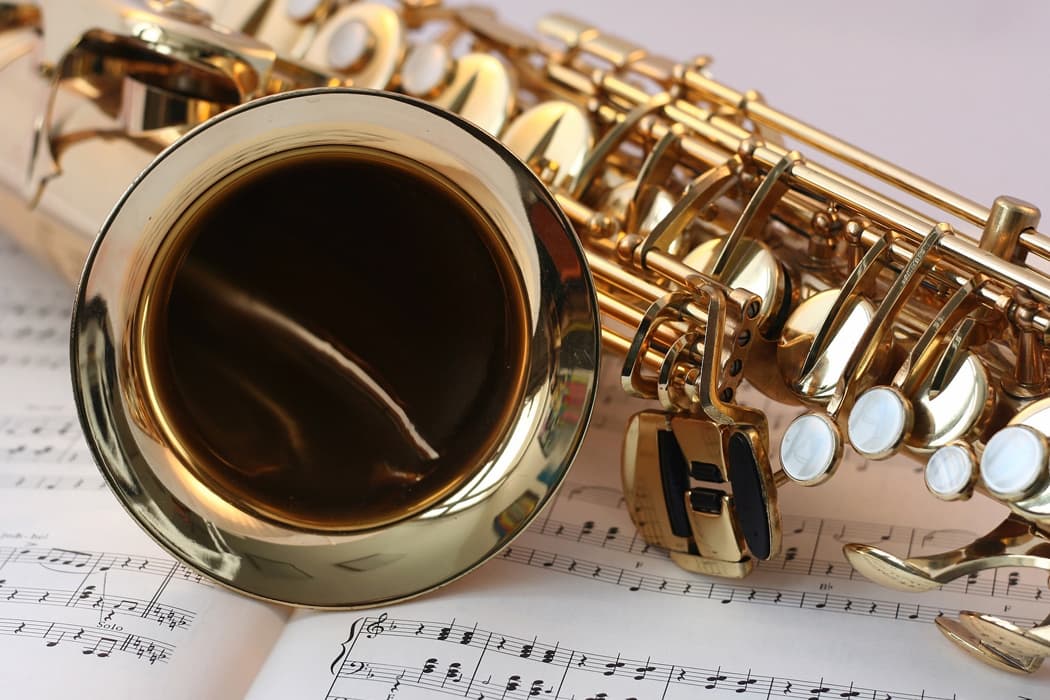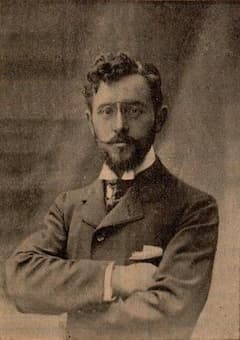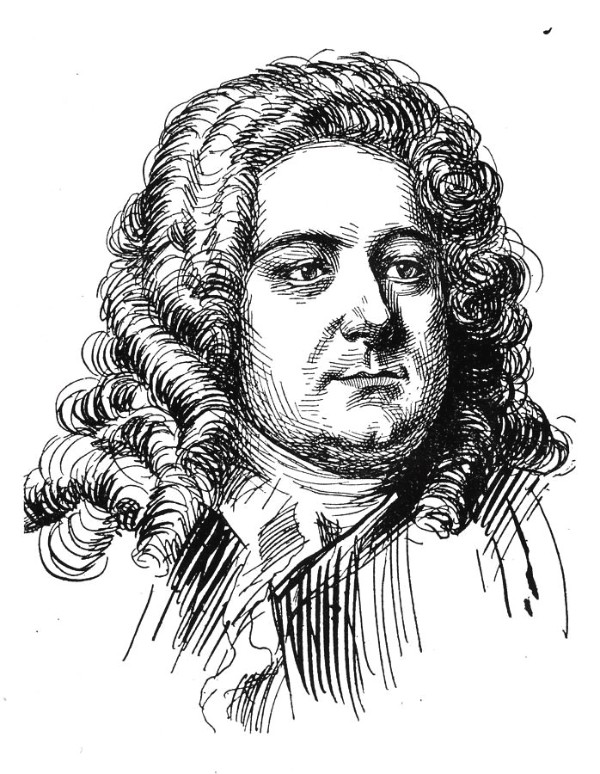The saxophone is a relatively young instrument in the world of classical music. (It was originally invented in 1846.) But its unique sound and versatility have captured the hearts of composers and audiences alike.

© flypaper.soundfly.com
Today we’re spotlighting twenty essential pieces for saxophone in classical music. These works showcase the range of the saxophone’s expressive capabilities and highlight its ever-growing importance in the world of classical music.
Jules Demersseman: Fantaisie sur un thème original, Op. 32 (1866)
Demersseman was a French flutist and composer who was born in 1833. He wrote this, one of the first French pieces for saxophone, shortly before his death in 1866.
This is a lovely, tuneful Romantic Era piece loaded with virtuoso flourishes.
Claude Debussy: Rhapsody for Alto Saxophone (1911)
Debussy‘s Rhapsody for Alto Saxophone is a single-movement work that showcases the saxophone’s expressive qualities.
It was originally commissioned in 1901 by saxophonist Elise Hall, an amateur player based out of Boston. Debussy was loath to fulfill the commission, but he finally finished the work in 1911.
The piece features lyrical melodies and impressionistic textures that evoke an irresistible dreamlike atmosphere.
Claude Debussy: Rhapsody for Alto Saxophone and Orchestra (Sohre Rahbari, saxophone; Belgian Radio and Television Philharmonic Orchestra; Alexander Rahbari, cond.)
Florent Schmitt: Légende for Alto Saxophone and Orchestra, Op. 66 (1918)

Florent Schmitt, 1900
Florent Schmitt‘s Légende for alto saxophone and orchestra is a highly virtuosic work perfect for a player eager to show off their skills!
The Légende is characterized by its lush harmonies, intricate rhythms, and evocative use of the saxophone’s unique timbre.
Florent Schmitt: Legende, Op. 66 (Theodore Kerkezos, alto saxophone; London Symphony Orchestra; Yuri Simonov, cond.)
Alexander Glazunov: Saxophone Quartet, Op. 109 (1932)
Glazunov‘s Saxophone Quartet is a four-movement work that proves the saxophone’s potential as a chamber music instrument.
Composed in 1932, it is, as its name suggests, written for four saxophones. Each voice is given equal importance, and demonstrates Glazunov’s skillful handling of instrumental color and texture.
Alexander Konstantinovich Glazunov: Saxophone Quartet, Op. 109 (The Blue Aurora Saxophone Quartet)
Alexander Glazunov: Saxophone Concerto (1934)
Glazunov’s Saxophone Concerto is a single-movement work. It features a lively and colorful string orchestra accompaniment that complements the soloist’s technical prowess.
Take note of the piece’s lyricism combined with the solo part’s dazzling pyrotechnics.
Jacques Ibert: Concertino da Camera for alto saxophone and 11 instruments (1935)

Jacques Ibert
Ibert‘s Concertino da Camera boasts a colorful orchestral instrumentation that supports the playful melodies given to the soloist.
It is characterized by its light and jazzy rhythms, inventive harmonies, and impressive technical demands, all of which make it a beloved staple of the saxophone repertoire.
Jacques Ibert: Concertino da Camera (Sohre Rahbari, saxophone; Belgian Radio and Television Philharmonic Orchestra; Alexander Rahbari, cond.)
Fernande Decruck: Sonata in C-Sharp (1943)
Fernande Decruck’s Sonata in C-Sharp for saxophone is a four-movement work that really probes the emotional, expressive capabilities of the instrument.
In her score, Decruck skillfully combines romantic and modernist elements, employing lush harmonies and sweeping melodies and setting them against more angular, dissonant passages.
The sonata’s emotional depth, technical challenges, and unique timbral effects make this work a significant contribution to the saxophone repertoire.
Paule Maurice: Tableaux de Provence (1948-1955)
Paule Maurice’s Tableaux de Provence is a five-movement suite that draws its inspiration from the music and culture of the Provence region of France.
It features a playful mix of traditional and contemporary styles, and includes musical portraits of subjects like “The Bumblebee” and a mysterious “Bohemian Woman.”
Hector Villa-Lobos: Fantasia for Soprano Saxophone (1948)
This Fantasia is a single-movement work that combines Brazilian folk influences and classical forms. It sports vivid, vibrant, virtuosic passages and lyrical melodies set against spiky rhythms and harmonies.
Pedro Iturralde: Pequeña Czarda (1949)
Pequeña Czarda (Little Czardas) by Iturralde is a colorful work loosely inspired by the traditional music of the composer’s native Spain.
It marries elements of Spanish and Hungarian folk music, with a fast-paced and virtuosic solo part set against a driving accompaniment.
Pedro Iturralde: Pequena Czarda (Koryun Asatryan, saxophone; Jang Eun Bae, piano)
Ingolf Dahl: Concerto for Alto Saxophone and Wind Orchestra (1949)
This concerto is a three-movement work featuring a soloist and a large wind ensemble, which acts as an equal partner to the saxophone.
The work’s style mixes neo-classical and modernist elements, and is characterized by its striking orchestration and big dynamic contrasts.
Paul Bonneau: Caprice en forme de valse (1950)
Bonneau’s Caprice en forme de valse is a virtuosic little piece for solo saxophone.
The piece employs playful variations on a waltz theme, and features a variety of intricate and acrobatic passages.
Its whirling, fast-paced tempos and dazzling technical demands make it one of the most striking short showpieces in the saxophone repertoire.
Luciano Berio: Sequenza IXb (1980)
Luciano Berio’s Sequenza IXb is a challenging, experimental work that pushes the technical limits of the saxophone.
It features a series of extended techniques and unconventional sounds. The score has no measures, which gives the piece an improvisatory character with no sense of steady rhythm.
Luciano Berio: Sequenza IXb (Wallace Halladay, alto saxophone)
Alan Hovhaness: Concerto for Soprano Saxophone and Strings (1980)
Wistful and pastoral, Hovhaness’s three-movement saxophone concerto is characterized by its lush harmonies, shimmering textures, and expressive melodies.
Ida Gotkovsky: Quatuor de Saxophones (1988)
This is a vibrant four movement work for saxophone quartet.
It draws on a wide range of musical influences, including jazz, contemporary classical music, and traditional folk music. Listen for the sharply written interplay between the four saxophones. Here’s the finale:
Takashi Yoshimatsu: Fuzzy Bird Sonata (1991)
The Fuzzy Bird Sonata is a colorful and imaginative work that draws on the composer’s interest in Japanese culture and natural phenomena.
The piece features virtuosic saxophone writing and evocative use of extended techniques and unconventional sounds (you will hear many birdlike sounds in this piece!).
Takashi Yoshimatsu: Fuzzy Bird Sonata (Rob Buckland, saxophone; Peter Lawson, piano)
André Waignein: Deux Mouvements (1992)
The first movement of this piece sounds like movie music. It is lyrically introspective and showcases the saxophone’s warm, rich tone.
The second movement begins with a rapid, rippling rhythmic figure in the piano, and gives the saxophonist a variety of soaring lines and fast fingerwork to work with.
John Williams: Escapades for Alto Saxophone and Orchestra (2002)
Williams’ work may sound like movie music, but “Escapades” actually is! It’s drawn from material that appeared in the 2002 movie Catch Me If You Can.
The work is inspired by jazz, and it features vocalizations and fingersnaps. It is chic, sleek, and everything else you’d want from a Williams score.
Jennifer Higdon: Concerto for soprano saxophone and orchestra (2007)
In 2005, the St. Paul Chamber Orchestra commissioned Jennifer Higdon to write this 17-minute, single-movement work.
It began life in Minnesota as an oboe concerto, but Higdon later reworked it for saxophone.
She wrote, “I have always been struck by the range of power and beauty that comes from saxophones. I have seen a sax quartet bring a large school room filled with hundreds of children come to a complete halt with one tutti note. Many people don’t realize just how much power exists in this group of instruments, and often they may not realize the potential for beauty.”
John Adams: Saxophone Concerto (2013)
Four orchestras from around the world joined forces to commission John Adams’s Saxophone Concerto.
After its premiere in Sydney, a local critic wrote, “Adams has thrown down the gauntlet with a solo line which demands speed, flexibility, musicality and, above all, stamina to keep going with barely a bar’s rest.”
Soloist Timothy McAllister said that it was some of the hardest music he’d ever played in his life! You can see why:
The twenty pieces here represent just a small fraction of the many great works that have been composed for the saxophone, ranging from virtuosic concertos to lyrical sonatas to lively chamber music.
Whether you are a student, amateur, or professional saxophonist, or just love listening to great music, these pieces for classical saxophone will surely be welcome additions to your musical life!
For more of the best in classical music, sign up for our E-Newsletter


I love the saxophone solo in the Old Castle movement of Pictures At An Exhibition! It is hauntingly beautiful!
I would have ditched the Higdon, the Waignein, the Hovhaness, and probably one or two others, and included works like the sonatas of Creston and Denisov, quartets by Rivier or Pierné or Bozza or Dubois, and the concertos of Larsson or Tomasi or Husa. These works are all far more significant entries in the saxophone repertoire. I do applaud you for including pieces like the Berio, Yoshimatsu, and Adams.
Also, while many of the performances you feature are excellent choices, some are dreadful (Rahbari is terrible).
My two cents’ worth.